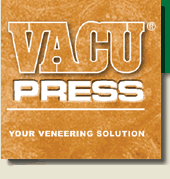Don Stephan

Posts: 825
Joined: 2003-07-18
Location: Cincinnati, Ohio
 User Profile User Profile |
If one is experienced with veneer hammering and hot hide glue, and with the size of the veneer panel, it can be completed in the time it takes me to get out the mixing paraphenalia, materials, roller pad and frame, . . . I found, though, that there is a huge learning curve, that the process (for me) was very challenging if the panel is longer than about 18", and that seaming CAN BE A NIGHTMARE depending on the species of the veneer. The other significant challenge is that all the email partners encouraging me to try it wouldn't give a water-hide glue granules ratio that would be close to their working viscosity. Sure, hide glue is constantly getting thicker when it is on heat, but a proper ratio for fresh glue would give consistent results and give someone like me a meaningful guideline.
One tip that served me well was to make a very thin hot hide glue mix (again, no better guideline), spread a thin layer on the glue surface of your substrate to seal it and let dry overnight. Scuff sand lightly the next day and then glue your panel.
Practice, practice, practice.
Regarding your second question, don't know the number, but this use of Unibond was demonstrated in Darryl Keil's second video. Seemed to turn out well. I wouldn't use a PVA for this because it will always allow some springback after removing clamp pressure.
My two cents, which probably isn't worth that much.
|






